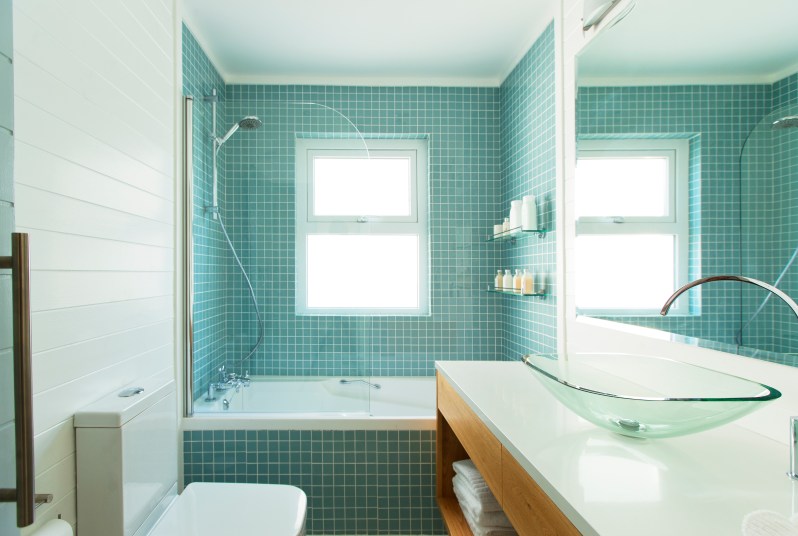5 Mistakes to Avoid When You Update Your Tile

Tiling fails would have to rank as one of the biggest headaches for any home renovator. If you get it wrong, it’s not exactly an easy fix; but if you get it right, the overall impact can be amazing. Here, expert renovators Michael and Carlene Duffy share the biggest tiling mistakes to avoid.
Having made their mark on The Block and Reno Rumble, Michael and Carlene now run their own home renovation and design consultancy Cedar & Suede, where they focus on creating striking interiors, revamping vintage campers on the side, and are working with Amber Tiles to share their top DIY ideas and tiling tips.
“The look and feel of tiles in any home can be truly transformative, turning the most ho hum of areas into incredible spaces,” says Carlene. “We’ve now renovated many properties and learned lots of valuable lessons about how to tile areas well. For instance, you don’t need to tile an entire bathroom floor to ceiling, you can play around with the areas and create contrast with painted walls and other features.
“Because there are so many choices out there, I’d recommend going onto a large site like Amber during the planning stage and playing around with their tile visualizer function before you commit to anything. It can give you great ideas about different tiles and how can work in certain spaces,” she adds. Before you take the plunge, Carlene shares some key mistakes to avoid.
1. You didn’t buy enough tiles.
Running out of tiles and then scrambling around trying to find more can be an absolute nightmare! It can also drag out labor costs, so make sure you calculate accurately before you start. If you’re not entirely sure, it’s a good idea to buy more tiles than you think you need. If not, the tile colors can vary from batch to batch or even become discontinued if you have to hunt more down.
A good rule of thumb is to buy around 15 percent more than you think you’ll use. This insures against breakages, miscalculations, and difficulties in cutting to size. You can also keep spare tiles in reserve in case any tiles become cracked in the future.
2. You didn’t consider the overall design.
It goes without saying that if your house is predominantly a Hamptons-inspired vision in white, then a dark, moody industrial vibe in your bathroom may look out of place. Tiles should always be chosen in relation to an overall decor scheme. You should also make sure that the other elements of the bathroom such as your fixtures and fittings will work well with the tiles too. Take into consideration the colors of your countertops, cabinets, and painted surfaces, and choose one hero feature, such as a tiled feature wall.
3. You got the wrong sized tiles.
Make life easy and choose a tile size and layout pattern that suits the dimensions of the various areas. Large tiles are currently on trend, but it’s important to remember that sometimes extra large tiles can make it difficult for the tiler to achieve adequate fall in the shower. Elsewhere in the home, choosing tiles that aren’t a good fit for the area can also result in odd sized cut tiles and slivers around edges and corners which can look messy.
4. You bought too many different tile types for one room.
While using the same types of tiles in every room can be a little boring, too many variations in the one space can cause visual chaos! I’d advise you to limit yourself to no more than three variations per room.
For bathroom walls, larger tiles are a good choice as they use less grout making them easier to clean. Smaller tiles such as hexagon, mosaic, and subway tiles also work well for feature walls and niches.
5. You forgot about maintenance requirements.
Though many varieties of tiles are easy to clean, some natural stone options such as marble and bluestone require sealing and should be treated with care, which is an important consideration before purchasing. If you’re not a fan of scrubbing grout, then go for larger tiles that require less.
Tiling alongside other durable materials including glass, glass block, terrazzo, concrete, stainless steel, and tough hardwoods will also cut down on the amount of room maintenance in later years.
This article originally appeared on our sister site, Homes to Love.
More From FIRST
How to Clean Any Mattress — Even After Kids Have an ‘Accident’













